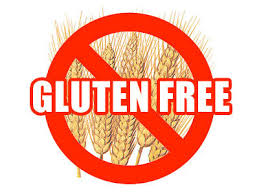Gluten-free food labels under new FDA rules
* The terms, “gluten free,” “no gluten,” “free of gluten” and “without gluten” can be used on labels of foods that meet the FDA gluten-free standard.
* No universal symbol will appear on packages to indicate that a food meets the FDA gluten-free standard. If a food company wants to indicate that a product meets the standard, it has to use one of the gluten-free terms.
* Certification seals from third parties, for example a seal from the Gluten Free Certification Organization, can continue to be used on labels. The FDA says it does not endorse or recommend any particular certification seal. Any food that uses a third party certification seal must meet the FDA labeling requirements at a minimum. Typically the standards for certification seals are stricter than the FDA requirements.
* The label format is left up to food makers; the FDA does not have a mandated design or any requirements for where the gluten-free label has to be placed.
* Food makers can continue to use the terms, “made with no gluten containing ingredients” and “not made with gluten containing ingredients.” If the terms are used in conjunction with a gluten-free label, the product must meet the FDA standard. If the terms are used without a gluten-free label, the FDA says, “consumers should not assume the food meets all FDA requirements.”
* Food makers can continue to use advisory statements such as, “Made in a factory that also processes wheat products” on a food that also has a gluten-free label. The FDA says it will need to “look at foods on a case by case basis to determine whether a specific advisory statement with a gluten-free claim would be misleading.” Any product with the advisory statement and gluten-free label would have to meet the FDA requirements.
* Naturally gluten-free foods can be labeled gluten free. This is a change from the proposed rules which would have prohibited the gluten-free label on inherently gluten-free foods including gluten-free grains and products like bottled water unless the label also said all foods of the same type were also gluten free. The final rule addresses concerns that some gluten-free grains, legumes and seeds have a high risk of cross-contamination. A gluten-free label on these kinds of products “provide the expectation that any gluten is less than 20 ppm,” the FDA says.
* Gluten-free labeling continues to be voluntary so even products that are gluten free may not be labeled as such. This is likely to come up most often with naturally gluten-free products with a low risk of cross-contamination, fruits and vegetables for example. The lack of a gluten-free label does not mean the food contains gluten.


 meet the FDA gluten-free standard.
meet the FDA gluten-free standard.